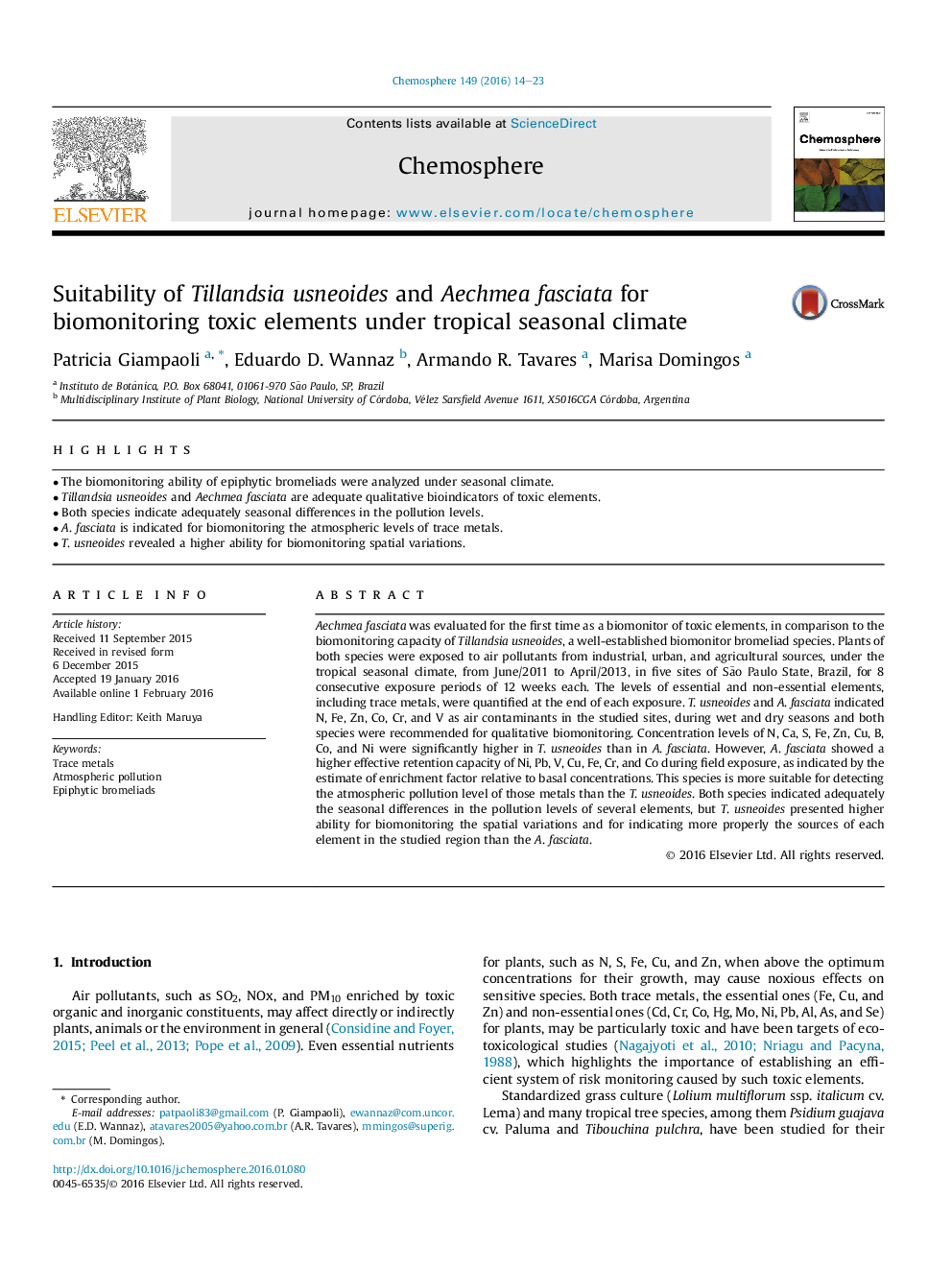| Article ID | Journal | Published Year | Pages | File Type |
|---|---|---|---|---|
| 4407898 | Chemosphere | 2016 | 10 Pages |
Abstract
Aechmea fasciata was evaluated for the first time as a biomonitor of toxic elements, in comparison to the biomonitoring capacity of Tillandsia usneoides, a well-established biomonitor bromeliad species. Plants of both species were exposed to air pollutants from industrial, urban, and agricultural sources, under the tropical seasonal climate, from June/2011 to April/2013, in five sites of São Paulo State, Brazil, for 8 consecutive exposure periods of 12 weeks each. The levels of essential and non-essential elements, including trace metals, were quantified at the end of each exposure. T. usneoides and A. fasciata indicated N, Fe, Zn, Co, Cr, and V as air contaminants in the studied sites, during wet and dry seasons and both species were recommended for qualitative biomonitoring. Concentration levels of N, Ca, S, Fe, Zn, Cu, B, Co, and Ni were significantly higher in T. usneoides than in A. fasciata. However, A. fasciata showed a higher effective retention capacity of Ni, Pb, V, Cu, Fe, Cr, and Co during field exposure, as indicated by the estimate of enrichment factor relative to basal concentrations. This species is more suitable for detecting the atmospheric pollution level of those metals than the T. usneoides. Both species indicated adequately the seasonal differences in the pollution levels of several elements, but T. usneoides presented higher ability for biomonitoring the spatial variations and for indicating more properly the sources of each element in the studied region than the A. fasciata.
Keywords
Related Topics
Life Sciences
Environmental Science
Environmental Chemistry
Authors
Patricia Giampaoli, Eduardo D. Wannaz, Armando R. Tavares, Marisa Domingos,
